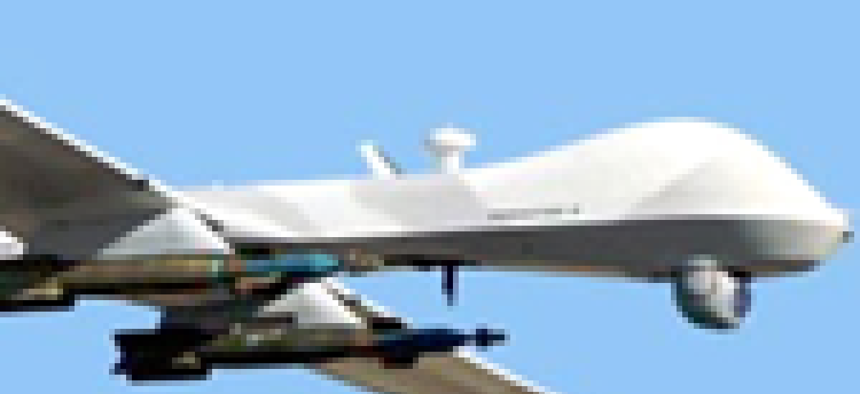Demonstration features Reaper’s electronic attack capability
GA-ASI and Northrup Grumman test electronic warfare capabilities for the large unmanned aircraft in a coordinated attack.
General Atomics Aeronautical Systems Inc. (GA-ASI) and Northrop Grumman have announced the second successful demonstration of a Predator B/MQ-9 Reaper’s electronic attack capability using Northrop Grumman’s Pandora Electronic Warfare (EW) system. The demonstration was held at the Marine Corps’ Weapons and Tactics Instructor (WTI) course located at Marine Corps Air Station Yuma.
The demonstration was used to evaluate the capability of a remotely piloted UAV to conduct electronic warfare missions in conjunction with other unmanned aircraft systems and manned EA-6B Growlers in a multi-node approach against a more capable Integrated Air Defense System (IADS), said General Atomics officials. According to Naval Air Systems Command, the EA-6B Prowler’s primary mission is to suppress enemy air defenses in support of strike aircraft through the use of electronic warfare.
The event focused on delivering a networked and integrated electronic warfare capability.
The demonstration paired a company-owned, remotely piloted Reaper with Northrop Grumman’s Pandora EW System, a low-cost version of the company’s APR-39 EW payload. The Pandora is a lightweight, low-power system that utilizes a flexible architecture for a more open interface and provides a wideband, multifunction solution that enables electronic protection, support, and attack.
The EW payload is said to have been very effective, and integrated seamlessly with the Predator B’s command and control architecture and avionics, according to GA-ASI. The Reaper and its payload were able to be incorporated with a Marine Command and Control network, allowing it to work with several platforms to provide cohesive electronic warfare effects. The Reaper supported a large aircraft strike group attacking simulated targets several hundreds of miles away at China Lake Naval Air Station.
"We demonstrated operational concepts using a layered approach to electronic warfare with GA-ASI's Reaper, EA-6B Prowlers, and other Group 3 [small, tactical] Unmanned Aerial Vehicles," said Brig. Gen. Matthew Glavy, assistant deputy commandant for Marine Aviation. "By conducting multiple events with a networked, pod-based jamming system, we were able to evaluate the viability of UAVs to conduct electronic warfare missions against enemy air defenses in support of tactical strike aircraft."
Northrop Grumman has previously integrated electronic warfare payloads onto smaller unmanned aircraft systems, reported Military Aerospace. The Bat UAV, a smaller, tactical unmanned aircraft, was equipped with the Pandora EW system for a demonstration in October 2013. The Bat UAV has a 10-foot wingspan, compared with the Reaper’s 65-foot wingspan.
Further collaboration between Northrop Grumman and GA-ASI will focus on increasing capabilities beyond EW and extending the network by linking the UAV to deliver multiple effects across different frequencies.





